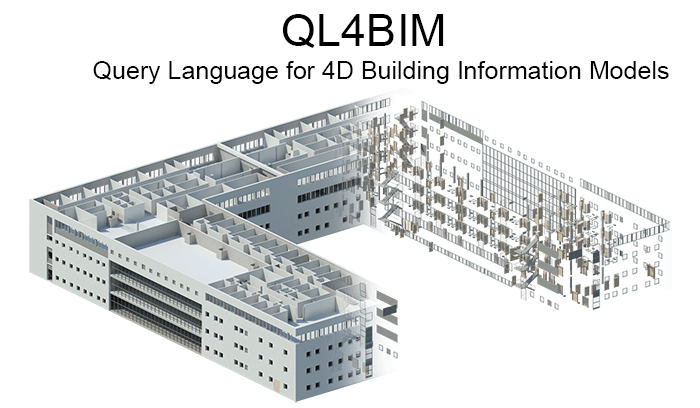A Building Information Model (BIM) consists of complex data structures which represent semantic and spatial information. This comprises data about building elements, their geometry and their reciprocal relations. Additionally, temporal information from the construction schedule can be added which creates a 4D model. The handling of a 4D-BIM can become difficult as it grows during the project both in complexity and data amount. Therefore, in this thesis the domain-specific query language QL4BIM is developed to ease the analysis and processing of 4D-BIMs.
The data of a building model is strongly correlated to space and time. Currently, the applied technologies are only able to perform simple textual and numerical examinations for selections and analysis. More support for the handling of building models can be achieved by advanced functionality which should be tailored for the structures in a 4D-BIM. Therefore, QL4BIM includes new domain-specific operators for the examination of topologic, directional and temporal aspects. In the domain of spatial functionality, topological analysis plays an import role in BIM. QL4BIM can distinguish the following topological configurations in three-dimensional space.
The spatial examination of three-dimensional geometry is computational expensive and can thus decrease the responsiveness of an information system. To provide an efficient approach, despite detailed geometry representations and a high number of building elements, QL4BIM facilitates optimized geometric algorithms and spatial indexing.
The majority of common query languages is solely able to process textual input. To increase the approval of QL4BIM, the developed approach also enables non-programmers to define queries easily: QL4BIM can be steered by a visual notion. In this concept, data sources, operators and data sinks are defined by the user. In the next step, connections between these visuals are set up. Finally, the resulting graph structure is parsed by QL4BIM to query the 4D‑BIM. The runtime system of the query language makes sure that the visual and the textual representations are synchronized.
An exemplary QL4BIM query in its textual and visual notation: "Select pairs of ceiling slab and wall. Only pairs should be considered in which the slab touches the wall and the wall is completely below the slab."
